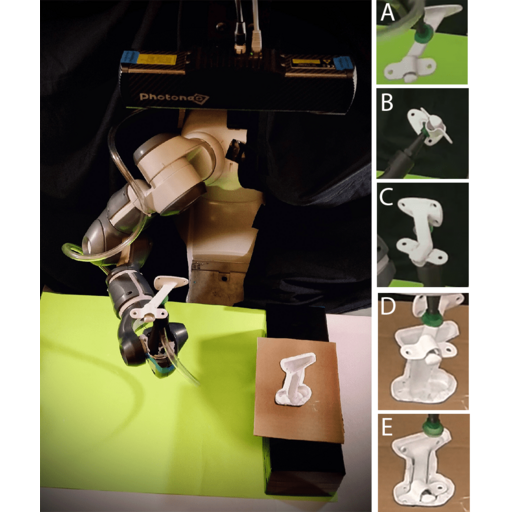Kit-Net: Self-Supervised Learning to Kit Novel 3D Objects into Novel 3D Cavities
Shivin Devgon, Jeffrey Ichnowski, Michael Danielczuk, Daniel S. Brown, Ashwin Balakrishna, Shirin Joshi, Eduardo M. C. Rocha, Eugen Solowjow, Ken Goldberg
IEEE Conference on Automation Science and Engineering (CASE), 2021.
[PDF] [Video] [Presentation] [Code] [Bibtex]

Abstract
In industrial part kitting, 3D objects are inserted into cavities for transportation or subsequent assembly. Kitting is a critical step as it can decrease downstream processing and handling times and enable lower storage and shipping costs. We present Kit-Net, a framework for kitting previously unseen 3D objects into cavities given depth images of both the target cavity and an object held by a gripper in an unknown initial orientation. Kit-Net uses self-supervised deep learning and dataaugmentation to train a convolutional neural network (CNN) to robustly estimate 3D rotations between objects and matching concave or convex cavities using a large training dataset of simulated depth images pairs. Kit-Net then uses the trained CNN to implement a controller to orient and position novel objects for insertion into novel prismatic and conformal 3D cavities. Experiments in simulation suggest that Kit-Net can orient objects to have a 98.9 % average intersection volume between the object mesh and that of the target cavity. Physical experiments with industrial objects succeed in 18 % of trials using a baseline method and in 63 % of trials with Kit-Net. Video, code, and data are available at https://github.com/BerkeleyAutomation/Kit-Net.
